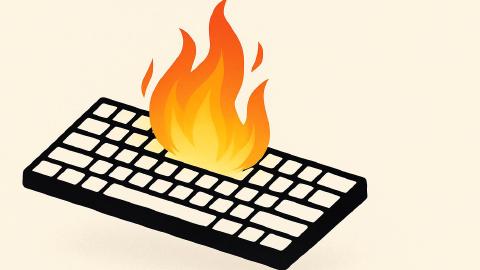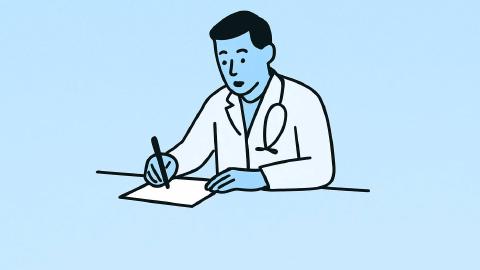CHA2DS2-VASc Calculator for Estimating Stroke and Atrial Fibrillation Risk
Calculate stroke and atrial fibrillation risk quickly and easily, adding the results to any EMR instantly.
Copy templates to use them anywhere:
Get the Calculator
{note: trim=yes}
CHF history? {formmenu: Yes; default=No; name=CHF; cols=6}
Hypertension history? {formmenu: Yes; default=No; name=hypertension; cols=6}
Age? {formmenu: default=<65; 65-74; >75; name=age; cols=8}
Diabetes mellitus history? {formmenu: Yes; default=No; name=diabetes; cols=6}
Stroke or TIA symptoms previously? {formmenu: Yes; default=No; name=stroketia; cols=6}
Vascular disease history? {formmenu: default=No; Yes; name=vascular}
(prior MI, peripheral artery disease, or aortic plaque)
Sex: {formmenu: default=; Female; Male; name=sex}
{endnote: trim=left}
CHA₂DS₂-VASc Score: {=chads2}
{if: chads2=0}Stroke risk was 0.2% per year in >90,000 patients (the Swedish Atrial Fibrillation Cohort Study) and 0.3% risk of stroke/TIA/systemic embolism.
One recommendation suggests a 0 score for men or 1 score for women (no clinical risk factors) is “low” risk and may not require anticoagulation; a 1 score for men or 2 score for women is “low-moderate” risk and should consider antiplatelet or anticoagulation; and a score ≥2 for men or ≥3 for women is “moderate-high” risk and should otherwise be an anticoagulation candidate.
{elseif: chads2=1}Stroke risk was 0.6% per year in >90,000 patients (the Swedish Atrial Fibrillation Cohort Study) and 0.9% risk of stroke/TIA/systemic embolism.
One recommendation suggests a 0 score for men or 1 score for women (no clinical risk factors) is “low” risk and may not require anticoagulation; a 1 score for men or 2 score for women is “low-moderate” risk and should consider antiplatelet or anticoagulation; and a score ≥2 for men or ≥3 for women is “moderate-high” risk and should otherwise be an anticoagulation candidate.
{elseif: chads2=2}Stroke risk was 2.2% per year in >90,000 patients (the Swedish Atrial Fibrillation Cohort Study) and 2.9% risk of stroke/TIA/systemic embolism.
One recommendation suggests a 0 score for men or 1 score for women (no clinical risk factors) is “low” risk and may not require anticoagulation; a 1 score for men or 2 score for women is “low-moderate” risk and should consider antiplatelet or anticoagulation; and a score ≥2 for men or ≥3 for women is “moderate-high” risk and should otherwise be an anticoagulation candidate.
{elseif: chads2=3}Stroke risk was 3.2% per year in >90,000 patients (the Swedish Atrial Fibrillation Cohort Study) and 4.6% risk of stroke/TIA/systemic embolism.
One recommendation suggests a 0 score for men or 1 score for women (no clinical risk factors) is “low” risk and may not require anticoagulation; a 1 score for men or 2 score for women is “low-moderate” risk and should consider antiplatelet or anticoagulation; and a score ≥2 for men or ≥3 for women is “moderate-high” risk and should otherwise be an anticoagulation candidate.
{elseif: chads2=4}Stroke risk was 4.8% per year in >90,000 patients (the Swedish Atrial Fibrillation Cohort Study) and 6.7% risk of stroke/TIA/systemic embolism.
One recommendation suggests a 0 score for men or 1 score for women (no clinical risk factors) is “low” risk and may not require anticoagulation; a 1 score for men or 2 score for women is “low-moderate” risk and should consider antiplatelet or anticoagulation; and a score ≥2 for men or ≥3 for women is “moderate-high” risk and should otherwise be an anticoagulation candidate.
{elseif: chads2=5}Stroke risk was 7.2% per year in >90,000 patients (the Swedish Atrial Fibrillation Cohort Study) and 10.0% risk of stroke/TIA/systemic embolism.
One recommendation suggests a 0 score for men or 1 score for women (no clinical risk factors) is “low” risk and may not require anticoagulation; a 1 score for men or 2 score for women is “low-moderate” risk and should consider antiplatelet or anticoagulation; and a score ≥2 for men or ≥3 for women is “moderate-high” risk and should otherwise be an anticoagulation candidate.
{elseif: chads2=6}Stroke risk was 9.7% per year in >90,000 patients (the Swedish Atrial Fibrillation Cohort Study) and 13.6% risk of stroke/TIA/systemic embolism.
One recommendation suggests a 0 score for men or 1 score for women (no clinical risk factors) is “low” risk and may not require anticoagulation; a 1 score for men or 2 score for women is “low-moderate” risk and should consider antiplatelet or anticoagulation; and a score ≥2 for men or ≥3 for women is “moderate-high” risk and should otherwise be an anticoagulation candidate.
{elseif: chads2=7}Stroke risk was 11.2% per year in >90,000 patients (the Swedish Atrial Fibrillation Cohort Study) and 15.7% risk of stroke/TIA/systemic embolism.
One recommendation suggests a 0 score for men or 1 score for women (no clinical risk factors) is “low” risk and may not require anticoagulation; a 1 score for men or 2 score for women is “low-moderate” risk and should consider antiplatelet or anticoagulation; and a score ≥2 for men or ≥3 for women is “moderate-high” risk and should otherwise be an anticoagulation candidate.
{elseif: chads2=8}Stroke risk was 10.8% per year in >90,000 patients (the Swedish Atrial Fibrillation Cohort Study) and 15.2% risk of stroke/TIA/systemic embolism.
We realize that 8 points showed a lower risk than 7 points, these were the findings in the study, obviously one should assume all scores ≥7 have a risk >10%.
One recommendation suggests a 0 score for men or 1 score for women (no clinical risk factors) is “low” risk and may not require anticoagulation; a 1 score for men or 2 score for women is “low-moderate” risk and should consider antiplatelet or anticoagulation; and a score ≥2 for men or ≥3 for women is “moderate-high” risk and should otherwise be an anticoagulation candidate.
{elseif: chads2=9}Stroke risk was 12.2% per year in >90,000 patients (the Swedish Atrial Fibrillation Cohort Study) and 17.4% risk of stroke/TIA/systemic embolism.
One recommendation suggests a 0 score for men or 1 score for women (no clinical risk factors) is “low” risk and may not require anticoagulation; a 1 score for men or 2 score for women is “low-moderate” risk and should consider antiplatelet or anticoagulation; and a score ≥2 for men or ≥3 for women is “moderate-high” risk and should otherwise be an anticoagulation candidate.{endif}
{note: preview=no; trim=left}
Calculating score based on answers:
CHF: {if: CHF="Yes"}{chfscore=1}{else}{chfscore=0}{endif}
Hypertension: {if: hypertension="Yes"}{hypertensionscore=1}{else}{hypertensionscore=0}{endif}
Age: {if: age="65-74"}{agescore=1}{elseif: age=">75"}{agescore=2}{else}{agescore=0}{endif}
Diabetes: {if: diabetes="Yes"}{diabetesscore=1}{else}{diabetesscore=0}{endif}
Stroke/TIA: {if: stroketia="Yes"}{stroketiascore=2}{else}{stroketiascore=0}{endif}
Vascular: {if: vascular="Yes"}{vascularscore=1}{else}{vascularscore=0}{endif}
Sex: {if: sex="Female"}{sexscore=1}{else}{sexscore=0}{endif}
Calculating final score:{chads2=chfscore+hypertensionscore+agescore+diabetesscore+stroketiascore+vascularscore+sexscore}{endnote}
*Note: Many healthcare professionals that use the CHA2DS2-VASc assessment also need to complete a HAS-BLED assessment.
Using this Calculator in Your EMR
Once this snippet (dot phrase) has been copied to your Text Blaze account, you can open this calculator from anywhere, including directly in the EMR of your choice.
We've assigned it the shortcut of /cha2. Typing that will open the calculator and will output the final score based on what has been entered into the calculator.
This snippet, or dot phrase, is compatible with any EMR. While you can customize it to your needs, no customization is necessary to begin using it.
About the CHA2DS2-VASc Score
The CHA2DS2-VASc score is a clinical prediction rule for estimating the risk of stroke in people with non-rheumatic atrial fibrillation (AF), a common and serious heart arrhythmia associated with thromboembolic stroke. Such a score is used to determine whether or not treatment is required with anticoagulation therapy or antiplatelet therapy, since AF can cause stasis of blood in the upper heart chambers, leading to the formation of a mural thrombus that can dislodge into the blood flow, reach the brain, cut off supply to the brain, and cause a stroke.
This snippet is based on this version from MDCalc, created by Dr. Gregory Lip.




